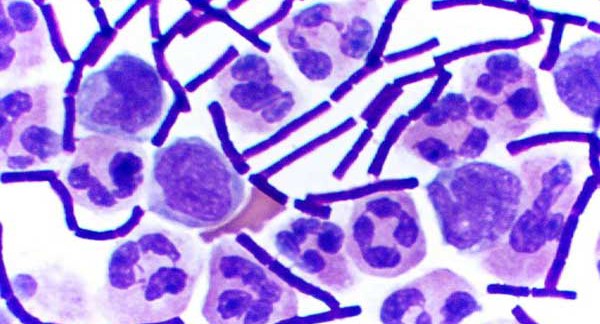
The U.S. military mistakenly shipped samples of live anthrax to nine states and a U.S. air base in South Korea, after apparently failing to properly inactivate the bacteria last year, U.S. officials said on Wednesday.
The samples containing live Bacillus anthracis, better known as anthrax, came from a Utah military lab and were shipped to government and commercial labs in California, Delaware, Maryland, New Jersey, New York, Tennessee, Texas, Virginia and Wisconsin, as well as the Osan Air Base in South Korea. The shipments, thought to be dead, were shipped under less rigorous conditions than the live agent protocol.
Pentagon officials said the samples pose “no known risk to the general public,” and there are no suspected or confirmed cases of anthrax infection. However, four U.S. civilians and 22 military personnel at the base in South Korea have been started on post-exposure prophylaxis, a type of preventive therapy that typically includes antibiotics, the anthrax vaccine, or both.
The potentially exposed lab workers face “minimal” risk, said Jason McDonald, a spokesman for the U.S. Centers for Disease Control. At the time of the possible exposure, they were “doing procedures that sent the agent into the air,” he told Reuters news agency.
If inhaled, airborne anthrax spores can lead to a deadly infection called inhalation anthrax. The bacteria can also cause serious and sometimes fatal infections through ingestion or contact with skin. Inhalation anthrax is the most deadly form of anthrax infection “because once it starts causing symptoms it is often too late for antibiotics to help. And the inhaled spores can lurk in the lungs for months before they activate, so someone exposed to the spores may not know what their symptoms mean,” NBC News reports.
Five people in the U.S. died of inhalation anthrax and 17 others were infected in 2001, when someone sent envelopes containing powdered anthrax spores through the U.S. mail to government and media targets.
In this latest incident, the anthrax, which was initially sent from Dugway Proving Ground in Dugway, Utah, was meant to be shipped in an inactive state as part of a research program aimed at developing a field-based test to identify biological threats, the Pentagon said.
However, the samples were apparently not properly inactivated before being sent off. All military, government and commercial labs that may have received samples are now reviewing their inventory of anthrax.
The Centers for Disease Control and Prevention is currently investigating the incident, in conjunction with the Defense Department, and said they do not suspect any risk to the general public at this time.
“CDC is working in conjunction with state and federal partners to conduct an investigation with all the labs that received samples from the DOD,” the agency said. “The ongoing investigation includes determining if the labs also received other live samples, epidemiologic consultation, worker safety review, laboratory analysis and handling of laboratory waste.”
“Out of an abundance of caution, (the Defense Department) has stopped the shipment of this material from its labs pending completion of the investigation,” said Pentagon spokesman Colonel Steve Warren.
The incident comes less than a year after a similar mishap involving a CDC laboratory. Last June, CDC officials said more than 80 U.S. scientists may have been exposed to live anthrax when a CDC lab in Georgia mistakenly sent out live samples. Lab workers thought they had inactivated the bacteria.
Reuters later reported that workers had made a mistake and only waited 24 hours to check if the anthrax was sufficiently inactive — rather than the required 48 — before giving them to other laboratories. Nobody became sick from the possible exposure, but the director of the CDC lab that made the mistake resigned about a month later, and the agency’s lab procedures were overhauled in the wake of the incident.
Anthrax and a number of other pathogens such as Ebola and the plague have been designated “Tier 1″ agents on the Department of Health and Human Services’ (HHS’s) list of select agents and toxins. According to the CDC, Tier 1 agents “present the greatest risk of deliberate misuse with significant potential for mass casualties or devastating effect to the economy, critical infrastructure, or public confidence, and pose a severe threat to public health and safety.” As such, only a handful of labs nationwide are permitted to work with these agents.
